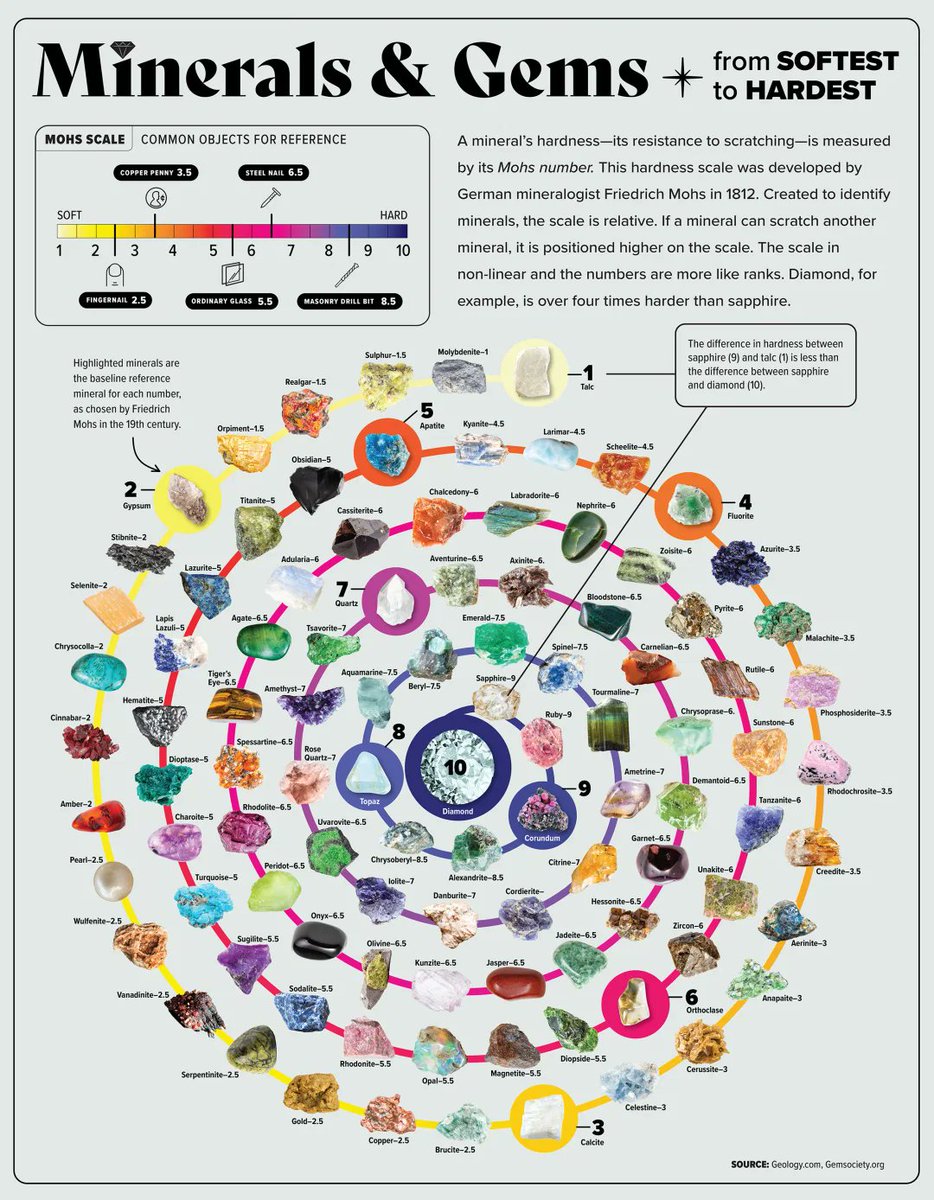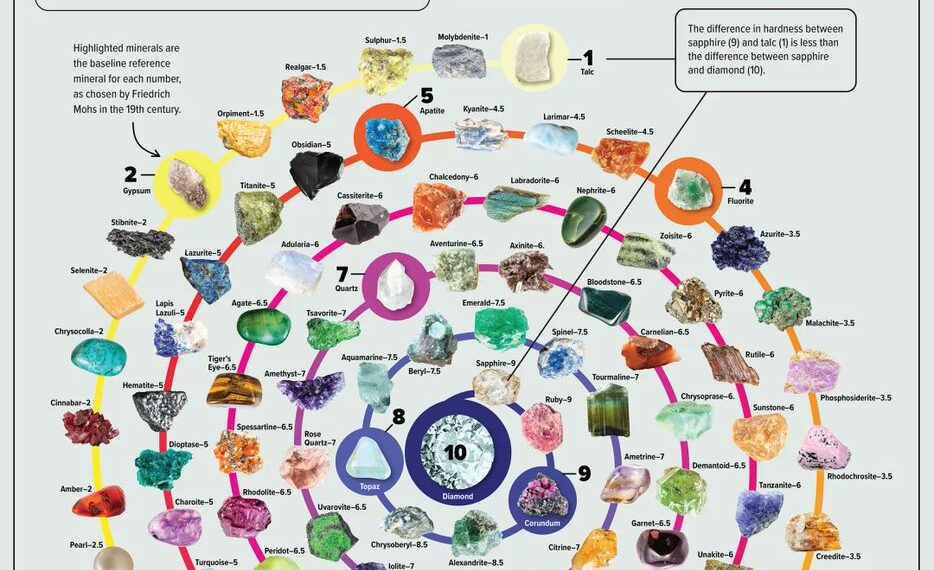Select Language:

Top Minerals and Gems Ranked by Hardness in 2025
Understanding the hardness of minerals and gemstones is crucial for collectors, jewelers, and geologists alike. The Mohs scale of mineral hardness remains the standard way to measure how resistant a mineral or gemstone is to scratching. Here’s a detailed guide to the top-ranked minerals and gems based on their hardness ratings in 2025.
1. Diamond – The Irrefutable Hardness Champion
- Hardness Level: 10
- Why It’s Notable: Diamonds are the hardest known natural substances, ranking at the top of the Mohs scale. This extreme hardness makes diamonds perfect for cutting tools and jewelry that can withstand everyday wear. Their unmatched durability also means they are resistant to most scratches, maintaining their brilliance for generations.
- Common Uses: Jewelry, industrial cutting and grinding tools, drill bits, and precision instruments.
2. Moissanite – The Reinvented Challenger
- Hardness Level: 9.25
- Why It’s Notable: While not naturally occurring in significant quantities, moissanite has gained popularity as a diamond alternative due to its incredible hardness and brilliance. It is nearly as durable as a diamond, making it an excellent choice for engagement rings.
- Common Uses: Engagement rings, fashion jewelry, and decorative items.
3. Corundum (Sapphire and Ruby) – The Valuable Heavyweight
- Hardness Level: 9
- Why It’s Notable: Both sapphires and rubies are varieties of the mineral corundum. Their high durability combined with vibrant colors makes them prized in the jewelry world. The hardness allows them to resist scratches and maintain their luster over time.
- Common Uses: Fine jewelry, luxury watches, and decorative carvings.
4. Topaz – The Versatile Gemstone
- Hardness Level: 8
- Why It’s Notable: Topaz’s combination of hardness and wide color range makes it a favorite among jewelers and collectors. It’s used in various types of jewelry from rings to necklaces, and its durability ensures long-lasting beauty.
- Common Uses: Fashion jewelry, collectors’ items, and ornamental objects.
5. Quartz – The Common yet Durable Mineral
- Hardness Level: 7
- Why It’s Notable: Quartz’s widespread availability and versatile appearance make it one of the most encountered minerals worldwide. Its moderate hardness allows it to be used in everything from jewelry to electronic components.
- Common Uses: Watches, electronic devices, decorative carvings, and jewelry.
6. Tourmaline – The Colorful Performer
- Hardness Level: 7 to 7.5
- Why It’s Notable: Known for its broad color spectrum, tourmaline is a popular choice for jewelry that demands both durability and visual appeal. Its hardness is sufficient for everyday wear, meaning it can be set in rings, earrings, and pendants.
- Common Uses: Gemstone jewelry, collectors’ cabochons, and ornamental objects.
7. Spinel – The Underestimated Treasure
- Hardness Level: 7.5 to 8
- Why It’s Notable: Often mistaken for ruby, spinel is gaining recognition thanks to its impressive hardness, vibrant colors, and rarity. It’s suitable for intricate jewelry pieces that require durability.
- Common Uses: High-end jewelry, engagement rings, and collectors’ items.
8. Lapis Lazuli – The Deep Blue Beauty
- Hardness Level: 5 to 5.5
- Why It’s Notable: While not as hard as other gemstones, lapis lazuli remains highly valued for its intense blue color and historical significance. Its softer nature makes it more suitable for ornamental carvings or jewelry that avoids harsh impacts.
- Common Uses: Carvings, pendants, inlays, and decorative objects.
Summing Up
The 2025 ranking of minerals and gemstones by hardness offers a clear perspective on their durability and suitability for various uses. Diamonds remain unsurpassed, but other gems like moissanite and sapphires stand out for their durability combined with beauty. For enthusiasts and professionals in the jewelry industry, understanding these rankings helps in choosing the right materials for longevity and aesthetic appeal.
Note: The hardness values are based on the Mohs scale and are approximate, as individual specimens can slightly vary in properties.







